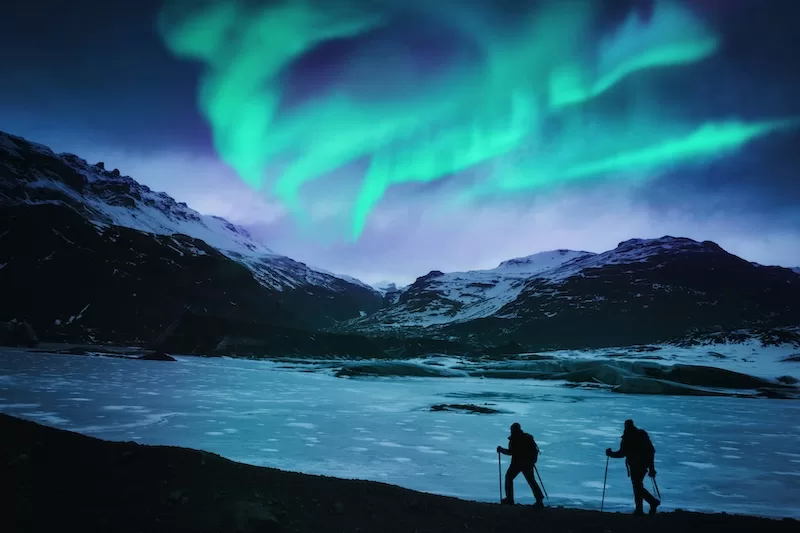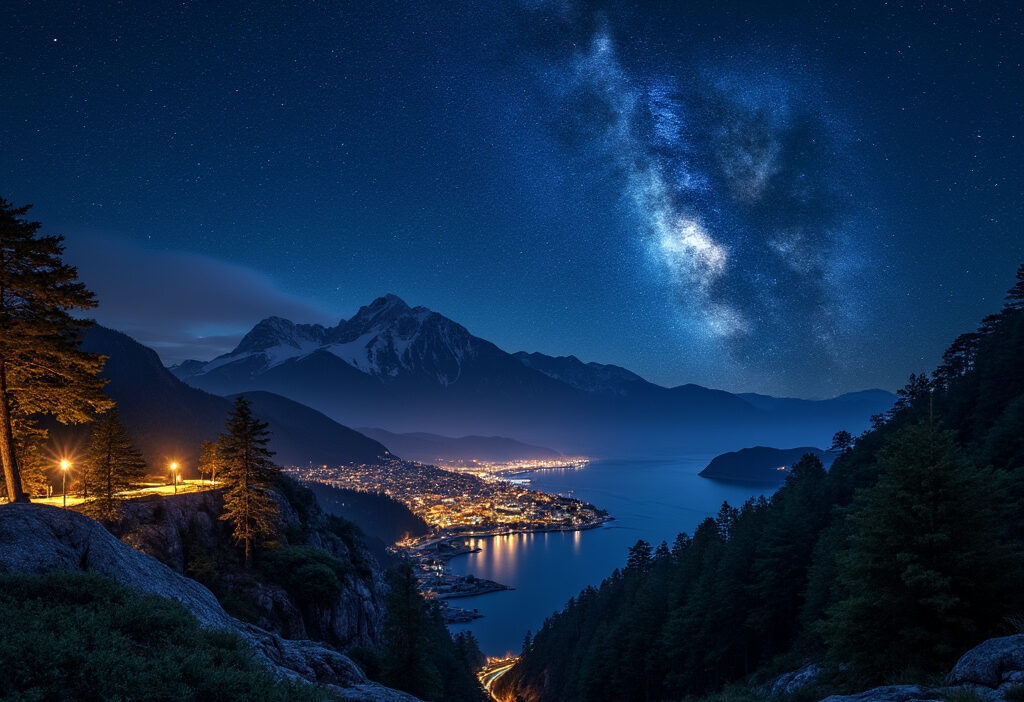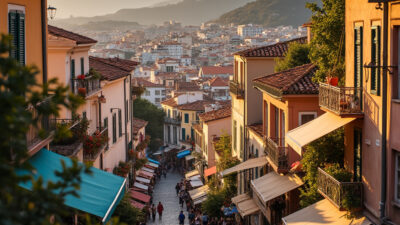Noctourism: Discovering the World After Dark
Noctourism, a fascinating blend of ‘nocturnal’ and ‘tourism’, invites travelers to explore the beauty and mystery of destinations after sunset. This emerging trend, showing significant growth in travel preferences for 2025, allows for unique experiences under the cover of night, ranging from celestial observations to vibrant nightlife explorations, setting a modern twist on adventure.
Understanding Noctourism
Noctourism, the practice of exploring destinations after dark, has evolved from a niche interest into a global phenomenon. Its origins trace back to ancient traditions—night markets, moonlit festivals, and celestial observations—but today, it’s fueled by modern travelers seeking unconventional experiences. A recent Booking.com survey underscores this shift, revealing that over 60% of respondents prioritize nocturnal activities, from stargazing to urban nightlife, as essential to their travel itineraries.
What defines noctourism isn’t just the time of day but the transformation of spaces. Daylight landmarks become surreal under artificial or natural night lighting, offering fresh perspectives. For instance, Paris’s Eiffel Tower or Tokyo’s Shibuya Crossing take on new identities after sunset, blending artistry with atmosphere. This shift also addresses overtourism by dispersing crowds across time, easing pressure on popular sites while unlocking revenue for nighttime economies.
Beyond aesthetics, noctourism redefines accessibility. Thermal imaging, LED-enhanced trails, and night-friendly infrastructure—like Singapore’s Gardens by the Bay—enable safer, immersive after-dark exploration. Meanwhile, bioluminescent bays in Puerto Rico or glowworm caves in New Zealand showcase nature’s nocturnal magic, impossible to replicate by day.
The rise of noctourism reflects a broader cultural shift: travelers crave authenticity and novelty. By embracing the night, destinations diversify their appeal, catering to adventurers, romantics, and solitude-seekers alike. As this trend grows, it challenges traditional tourism models, proving that the world after dark isn’t just a backdrop—it’s a frontier waiting to be discovered.
The Lure of the Night
The allure of noctourism lies in its ability to transform the familiar into the extraordinary, offering travelers a fresh perspective on destinations they might have only experienced under the sun. One of the primary draws is the sensory shift that occurs after dark. Nightfall amplifies certain senses while dulling others—sounds become crisper, lights more vivid, and the absence of visual clutter allows for deeper immersion in the environment. This altered perception creates a unique emotional connection to places, whether it’s the haunting echo of footsteps in a historic alley or the surreal glow of bioluminescent waters.
Another key factor is the escape from daytime constraints. Noctourism appeals to those seeking respite from overcrowded attractions and sweltering heat. Nighttime exploration offers cooler temperatures and quieter spaces, making it ideal for introspective travelers or those craving solitude. Urban centers, often overwhelming by day, reveal a different rhythm after dark—street art illuminated by neon, rooftop bars with panoramic views, and night markets buzzing with local flavors.
The rise of Dark Sky Destinations has also fueled interest in noctourism. Places like Namibia’s NamibRand Nature Reserve or Utah’s Natural Bridges National Monument provide unparalleled celestial views, free from light pollution. Stargazing tours and astrophotography workshops cater to growing demand for cosmic encounters, blending science with wonder.
Finally, expanded access to nocturnal experiences—once limited by safety concerns or logistical hurdles—has opened new possibilities. Advances in lighting, guided night hikes, and 24-hour cultural venues empower travelers to explore with confidence. From moonlit cave expeditions to midnight museum openings, noctourism redefines what it means to discover the world—one night at a time.
Noctourism Activities around the Globe
Noctourism offers a vast array of activities that cater to diverse interests, from nature enthusiasts to urban explorers. One of the most sought-after experiences is chasing the Northern Lights in destinations like Iceland, Norway, and Finland. These celestial displays attract thousands annually, with Iceland alone reporting a 40% increase in winter tourism over the past decade, largely driven by aurora-focused trips. Similarly, nocturnal wildlife safaris in Africa and South America provide unparalleled opportunities to observe elusive creatures like leopards, bushbabies, and bioluminescent insects under the cover of darkness.
Urban noctourism thrives in cities like Tokyo, Bangkok, and Marrakech, where night markets and street food stalls create vibrant after-dark economies. Taipei’s Shilin Night Market, for instance, draws over 30,000 nightly visitors, blending culinary adventures with cultural immersion. Meanwhile, cultural performances such as traditional shadow puppetry in Indonesia or flamenco shows in Spain extend their hours to accommodate nocturnal travelers, offering a deeper connection to local heritage.
For thrill-seekers, night hiking in places like Utah’s Bryce Canyon or Australia’s Blue Mountains reveals surreal landscapes under moonlight. Adventure companies report a 25% annual growth in bookings for guided night treks. On the water, bioluminescent bays in Puerto Rico and the Maldives glow with ethereal light, creating unforgettable kayaking and swimming experiences.
The rise of noctourism is also evident in niche offerings like dark sky tourism, with certified reserves like Chile’s Atacama Desert and Namibia’s NamibRand attracting stargazers. The International Dark-Sky Association notes a 300% increase in dark sky destination certifications since 2015, reflecting global demand. Whether it’s exploring ancient ruins by lantern light or dancing at underground clubs in Berlin, noctourism transforms the world into a playground after sunset.
Impact on the Travel Industry
The travel industry is undergoing a transformative shift as it embraces the rising demand for noctourism, adapting its offerings to cater to night-time adventurers. Companies like Wayfairer Travel and Flash Pack report a 40% increase in bookings for after-dark experiences over the past two years, signaling a lucrative market shift. From specialized nocturnal wildlife safaris to urban nightlife tours, operators are curating immersive experiences that capitalize on the allure of the night.
One of the fastest-growing segments is astro tourism, with destinations like Chile’s Atacama Desert and Norway’s Arctic Circle witnessing a surge in bookings. Experts predict this niche will double in value by 2025, driven by travelers seeking pristine stargazing conditions. Hotels and lodges are responding by installing observatories and offering astronomer-led tours, while airlines are introducing overnight flights optimized for celestial viewing.
The industry is also leveraging technology to enhance nocturnal travel. Apps like Dark Sky Finder help tourists locate ideal stargazing spots, while augmented reality (AR) is being used to enrich night-time cultural tours with historical overlays. Travel agencies are bundling nocturnal experiences with traditional itineraries, creating hybrid packages that appeal to a broader audience.
Sustainability is another key focus, as operators minimize light pollution in astro-tourism hubs and promote eco-friendly nocturnal wildlife encounters. This alignment with responsible travel trends further boosts noctourism’s appeal. As the market expands, the travel industry’s adaptability ensures that night-time adventures will remain a dominant force, reshaping how we explore the world after dark.
The Historical Journey of Night-Time Travel
The Historical Journey of Night-Time Travel
Long before noctourism became a trend, humans navigated the night out of necessity. Ancient civilizations relied on nocturnal travel for trade, communication, and survival. Caravans traversed deserts under the cool cover of darkness, while sailors used stars like Polaris to guide their voyages. The night was not just a time of rest but a practical space for movement, especially in regions where daytime heat or predators made daylight travel perilous.
As societies advanced, so did their relationship with the night. The invention of artificial lighting—from oil lamps to gaslights—transformed urban spaces, enabling nighttime social and cultural activities. The 18th and 19th centuries saw the rise of moonlit gardens, nocturnal salons, and even night-time promenades among Europe’s elite. These early forms of noctourism were exclusive but laid the groundwork for today’s democratized night-time explorations.
The 20th century brought further innovation, with electric lighting revolutionizing cities and making nightlife a global phenomenon. Yet, it wasn’t until recent decades that noctourism emerged as a distinct travel niche. Advances in transportation, safety, and lighting technology allowed travelers to seek out the night not out of necessity but for wonder—whether chasing the Northern Lights, exploring bioluminescent bays, or stargazing in remote deserts.
Today, noctourism thrives as a blend of ancient tradition and modern curiosity. It connects us to our ancestors who once relied on the night while offering new ways to experience the world’s beauty after dark. This historical progression underscores how humanity’s fascination with the night has evolved from survival to spectacle, enriching travel in ways our predecessors could scarcely imagine.
Preserving the Night Sky
The night sky has been a source of wonder for millennia, but the growing scourge of light pollution threatens to obscure it. As noctourism gains popularity, preserving dark skies becomes essential—not just for stargazers, but for ecosystems that rely on natural darkness. Artificial light disrupts celestial observations, washing out stars and galaxies, while also wreaking havoc on nocturnal wildlife.
Light pollution interferes with the circadian rhythms of animals, disorienting migratory birds, confusing sea turtles, and altering predator-prey dynamics. For humans, it diminishes the awe-inspiring spectacle of the Milky Way, a cornerstone of noctourism. Initiatives like the International Dark-Sky Association (IDA) work to certify Dark Sky Parks and promote responsible lighting policies. Places like Namibia’s NamibRand Nature Reserve and Utah’s Natural Bridges National Monument exemplify how protected dark skies can coexist with tourism.
Technological solutions, such as shielded LED lighting and motion-activated fixtures, help reduce unnecessary illumination. Meanwhile, astrotourism destinations leverage their pristine skies to attract visitors, proving that conservation and commerce can align. Community-driven efforts, like Spain’s Starlight Foundation, advocate for legislation to curb light pollution while fostering education on its ecological impact.
The future of noctourism depends on balancing human activity with the preservation of darkness. Without urgent action, the very essence of night-time exploration—the connection to the cosmos and nature’s nocturnal rhythms—could fade into an artificial glow. Protecting dark skies isn’t just about nostalgia; it’s about sustaining a world where the night remains alive with wonder.
Nocturnal Wildlife and Its Conservation
As the sun sets, a hidden world awakens—nocturnal wildlife emerges, playing a vital role in ecosystems often overlooked by daytime observers. From bats and owls to fireflies and bioluminescent fungi, these species have evolved to thrive in darkness, each fulfilling unique ecological niches. Bats, for instance, are crucial pollinators and pest controllers, while owls regulate rodent populations. Fireflies, with their mesmerizing light displays, are not just enchanting but also indicators of environmental health. However, the rise of noctourism brings both opportunities and challenges for these creatures.
The ethical dilemma lies in balancing human curiosity with wildlife preservation. Flash photography, artificial lighting, and noise from nocturnal tours can disrupt natural behaviors, such as mating rituals or hunting patterns. For example, sea turtles rely on moonlight to navigate to the ocean, and excessive coastal lighting can disorient hatchlings, leading to fatal consequences. Similarly, glow-worm colonies, which attract tourists with their ethereal glow, are sensitive to light pollution, which can interfere with their bioluminescent communication.
Conservation efforts must be integrated into noctourism practices. Responsible guidelines include using red-filtered lights to minimize disturbance, maintaining safe distances, and restricting access to sensitive habitats during critical periods. Organizations like the International Dark-Sky Association advocate for wildlife-friendly lighting, while some tour operators partner with researchers to contribute to citizen science projects. By fostering awareness and respect for nocturnal ecosystems, noctourism can become a force for conservation, ensuring these species continue to thrive under the stars—just as urban nights, the next frontier of noctourism, offer their own illuminated wonders.
Exploring Urban Nights
Cities come alive in ways few expect once the sun sets, transforming into dynamic landscapes where architecture, culture, and community take on new dimensions under artificial and natural light. Noctourism in urban environments offers a fresh lens through which to experience the vibrancy of city life, revealing hidden narratives and reimagining familiar spaces. From illuminated landmarks to nocturnal street markets, the urban nightscape becomes a playground for explorers seeking a different rhythm.
One of the most compelling aspects of urban noctourism is the interplay between light and architecture. Iconic structures like the Eiffel Tower or Tokyo’s Shibuya Crossing are redefined by strategic lighting, creating dramatic silhouettes and reflections that daytime visitors never witness. Night tours, such as those in Prague or New York, guide travelers through historic districts bathed in golden hues, while augmented reality apps overlay stories of the past onto modern facades. These experiences deepen the connection between visitor and city, blending history with contemporary energy.
Beyond aesthetics, urban nights foster unique cultural exchanges. Night markets in Taipei or Marrakech buzz with activity, offering local delicacies and crafts under strings of lanterns. Rooftop bars and underground jazz clubs reveal the pulse of a city’s social life, where locals and tourists mingle in shared appreciation of the after-hours vibe. Even public spaces, like Singapore’s Gardens by the Bay, host light shows that merge technology with nature, drawing crowds long after sunset.
However, this nocturnal allure must be balanced with mindful planning. As cities capitalize on noctourism, issues like light pollution and overcrowding emerge—topics that will be explored further in the next chapter. For now, urban noctourism stands as a testament to humanity’s ability to reimagine its surroundings, turning darkness into a canvas for creativity and connection.
Sustainability and Ethical Considerations
As cities and natural landscapes increasingly embrace noctourism, the need for sustainable and ethical practices becomes paramount. The surge in night-time activities—from illuminated landmarks to nocturnal wildlife tours—raises concerns about light pollution, energy consumption, and the disruption of ecosystems. Balancing the allure of after-dark exploration with environmental stewardship is critical to ensuring noctourism’s long-term viability.
Light pollution is a primary challenge, as excessive artificial lighting can obscure starry skies, disorient wildlife, and even affect human health. Destinations like Dark Sky Parks implement strict lighting regulations to preserve natural darkness, while urban areas adopt smart lighting solutions to reduce glare and energy waste. For example, cities such as Paris and Tokyo use LED technology with motion sensors to minimize unnecessary illumination.
Cultural preservation is another ethical consideration. Night markets, festivals, and historic site visits must respect local traditions and avoid commodifying cultural practices. In places like Kyoto, where lantern-lit alleys and geisha performances attract nocturnal visitors, guidelines ensure tourism doesn’t overwhelm residents or dilute authenticity.
Economic equity also plays a role. Noctourism should benefit local communities, not just global chains. Initiatives like night-time guided tours led by indigenous groups or small businesses—such as Barcelona’s ghost walks or Marrakech’s moonlit souks—distribute revenue more evenly while fostering meaningful connections.
Finally, wildlife protection demands careful planning. Nocturnal animal habitats, like bioluminescent bays in Puerto Rico or bat colonies in Austin, require visitor limits and low-impact lighting to prevent harm. By integrating sustainability into noctourism’s growth, destinations can protect their treasures while offering unforgettable after-dark experiences.
Embracing the Dark: Future Trends in Noctourism
As noctourism continues to gain traction, its future is poised to be shaped by a blend of technological innovation, evolving traveler expectations, and global shifts in how we experience the night. Emerging technologies like augmented reality (AR) and bioluminescent lighting could redefine nocturnal landscapes, transforming urban alleys or remote forests into interactive, illuminated wonderlands. Imagine AR-guided night hikes where constellations come alive with mythological stories or bioluminescent pathways that glow underfoot, minimizing light pollution while enhancing safety and aesthetics.
The rise of smart cities will further influence noctourism, with adaptive lighting systems that respond to human presence, reducing energy waste while creating dynamic after-dark environments. Drones equipped with soft, non-intrusive lights could paint temporary art across the night sky, offering ephemeral performances that leave no trace. Meanwhile, advances in wearable tech—such as night-vision contact lenses or temperature-regulating fabrics—will empower travelers to explore comfortably in extreme or low-light conditions.
Shifting traveler behaviors also hint at new directions. As wellness tourism grows, nocturnal experiences like moonlit meditation sessions or sound baths under starry skies will cater to those seeking tranquility after dark. Urban noctourism might expand into 24-hour cultural hubs, where museums, cafes, and galleries operate through the night, appealing to digital nomads and night owls.
Global trends, such as the increasing rarity of dark skies due to light pollution, could spur “dark sky diplomacy”—collaborations between destinations to preserve and market pristine nightscapes. Noctourism may also intersect with space tourism, as companies offer simulated lunar or Martian nights for earthbound adventurers.
Ultimately, the future of noctourism lies in its ability to merge sustainability with cutting-edge innovation, offering transformative experiences that respect the night while pushing its boundaries.

Conclusions
As the allure of noctourism captivates globetrotters, its evolution from a niche interest to a significant travel trend reflects a growing desire for unique, immersive experiences. By embracing the mysteries of the night, travelers gain fresh perspectives on the world, contributing to the preservation of cultural and natural nightscapes. With ethical practices and sustainability at its core, noctourism promises a continued expansion, offering intriguing adventures that resonate with the modern traveler’s search for adventure beyond the daylight.



